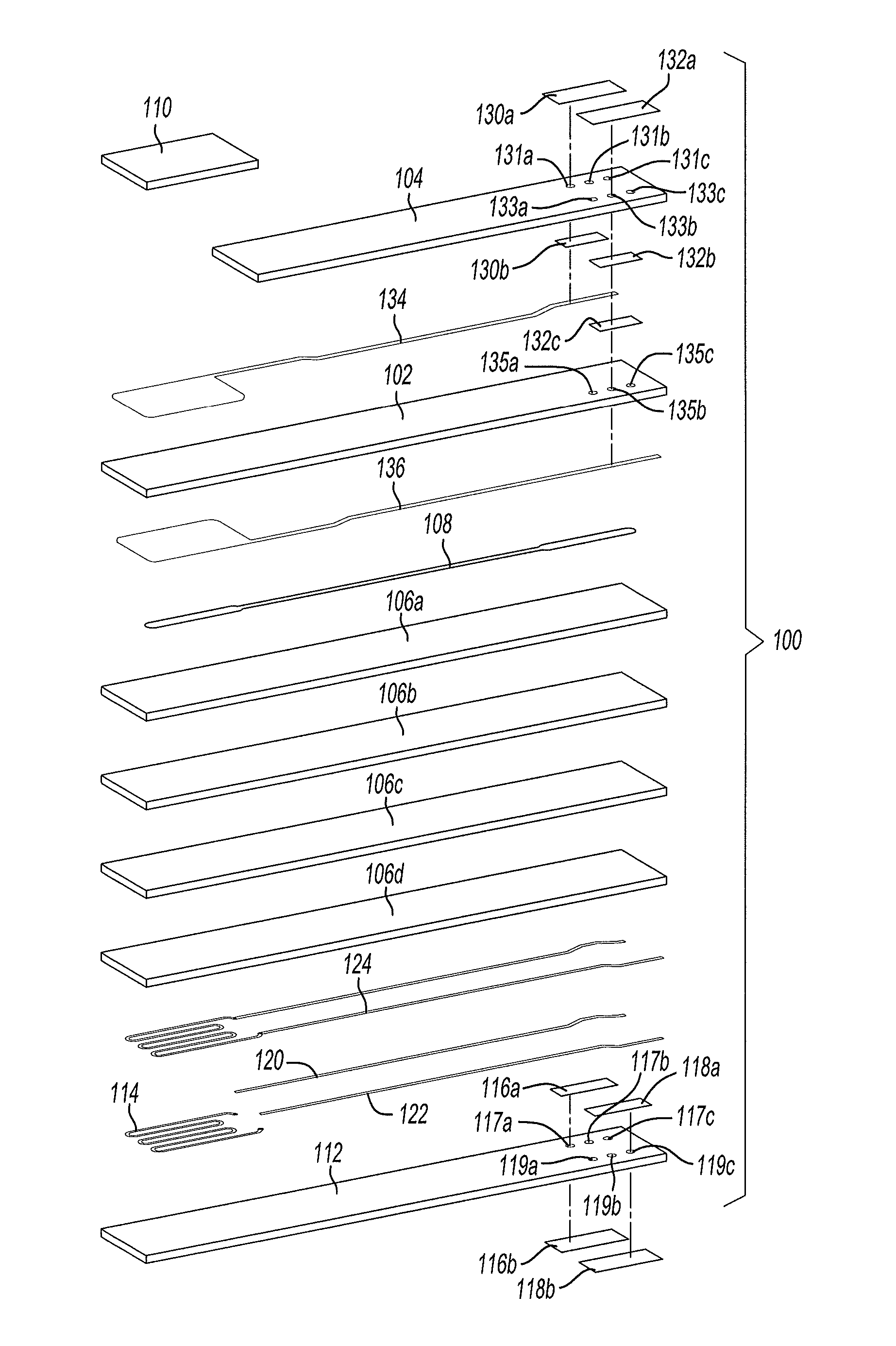Palladium ink exhaust sensor
a technology of exhaust sensor and palladium ink, which is applied in the direction of electrochemical variables of materials, instruments, chemistry apparatuses and processes, etc., can solve the problems of inconvenient operation, inconvenient operation, and inability to operate without venting feature, so as to prevent crack formation
- Summary
- Abstract
- Description
- Claims
- Application Information
AI Technical Summary
Benefits of technology
Problems solved by technology
Method used
Image
Examples
Embodiment Construction
[0029]Referring now to FIGS. 5 through 12, where the invention will be described with reference to specific embodiments, without limiting same, FIG. 5 is an exploded view of an exhaust sensor 100. In some aspects exhaust sensor 100 is similar to exhaust sensor 10 of the prior art, however exhaust sensor 100 employs an expansion zone and venting feature as will be further described herein. The expansion zone and venting feature enable palladium to be employed instead of platinum for forming circuit features such as heaters, circuit traces and pads, sense elements, and the like.
[0030]Exhaust sensor 100 is formed from layers of ceramics and metal inks that are fired together to form a unitary laminar structure. A sensor layer 102, such as zirconia, can be sandwiched between a sensor protective layer 104 and a structure of one or more support / insulating layers 106a-106d, which are collectively referred to as support / insulating layer 106. Sensor protective layer 104 and support / insulatin...
PUM
| Property | Measurement | Unit |
|---|---|---|
| temperature | aaaaa | aaaaa |
| temperature | aaaaa | aaaaa |
| electrically conductive | aaaaa | aaaaa |
Abstract
Description
Claims
Application Information
 Login to View More
Login to View More - R&D
- Intellectual Property
- Life Sciences
- Materials
- Tech Scout
- Unparalleled Data Quality
- Higher Quality Content
- 60% Fewer Hallucinations
Browse by: Latest US Patents, China's latest patents, Technical Efficacy Thesaurus, Application Domain, Technology Topic, Popular Technical Reports.
© 2025 PatSnap. All rights reserved.Legal|Privacy policy|Modern Slavery Act Transparency Statement|Sitemap|About US| Contact US: help@patsnap.com



